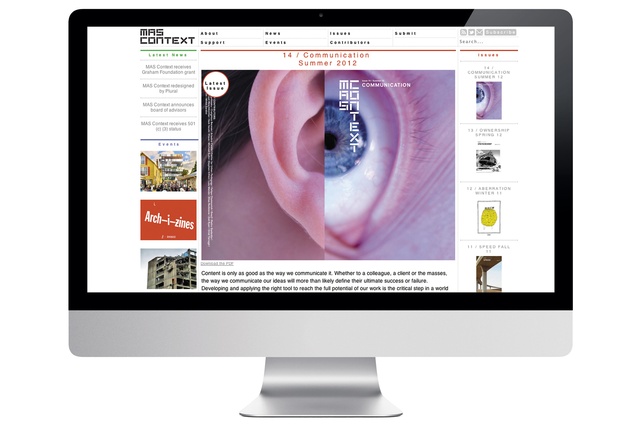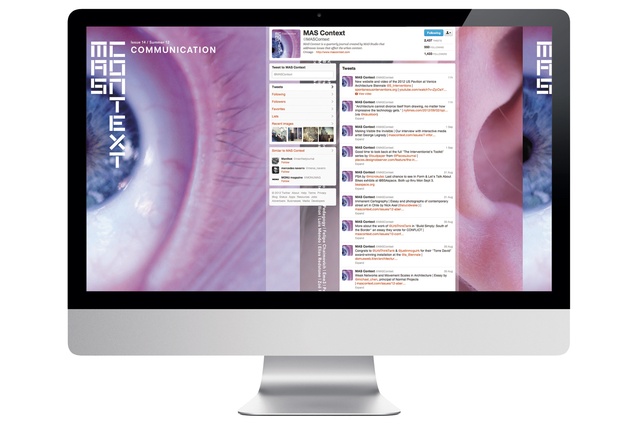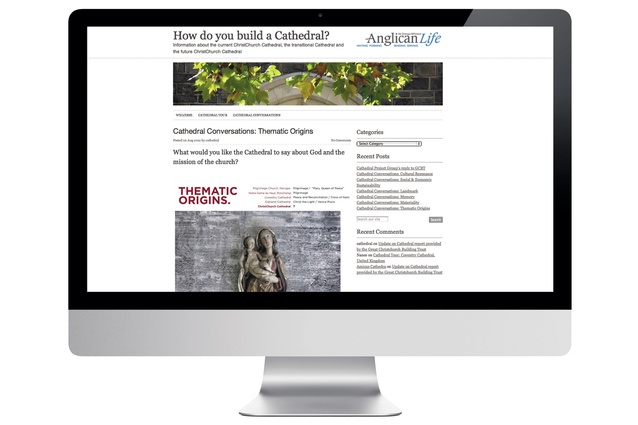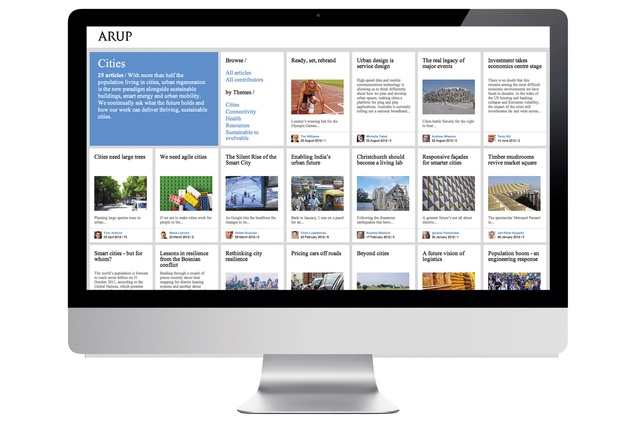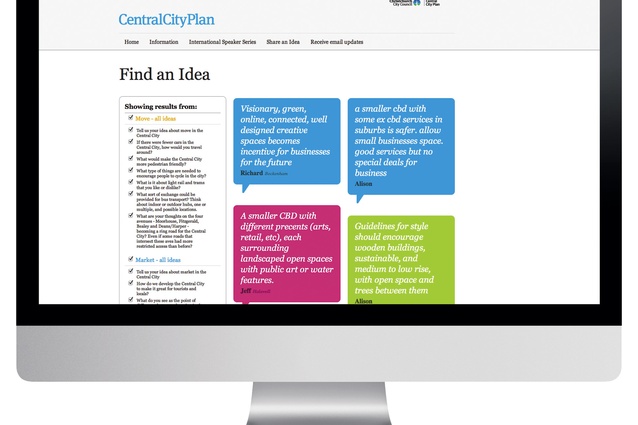Social Architecture
Whether we are keeping in touch with friends and family or actively engaged with an online community, social media now shape the way many of us communicate. Facebook users now number close to one billion worldwide and the other major channels are growing rapidly. While claims about usage are often overblown, there can be no doubt about the ubiquity of social media.
Increasingly, businesses are adopting social media to engage with their customers. However, architectural firms have generally been slower in adopting social-media practices than have companies in other sectors. Most architects do have websites providing good information about completed projects, staff and contact details but the majority of these websites are really just online portfolios. Once the initial excitement about the design and beautiful photography has died away, these sites are left to fend for themselves, quickly becoming stale and tired.
By contrast, there has been a parallel explosion of blogs and editorially led websites that engage with architectural news and theory through various social-media channels. The popularity of news aggregation websites, such as ArchDaily (587,900 Facebook ‘likes’) and Architizer (543,608 Facebook ‘likes’) along with influential blogs such as BLDGBLOG, is evidence that a much-wider, well-informed audience is keen to engage with architectural and design developments.
It is this more-popular engagement with architectural debate that could help inform a practice’s decision to develop a social-media strategy. With Auckland’s population set to grow significantly over the next 20 years and the rebuilding of Christchurch still to commence, there is no better time for New Zealand architects to be engaging in a wider discussion about the future of our cities.There is a number of opportunities which could inform an architectural practice’s social-media output.
Consultation
The power of social media as consultation tools is one that is particularly ripe for further development. Monika Llewelyn, Opus Architecture’s marketing coordinator, sees the current period as an exciting time to be involved with social media. “After all, architecture and the city are about how people live their lives and social media have huge potential to open up the design process.” She also underlines the importance of being on the social-media channels that already have followings. This helped inform the decision by Opus to integrate its website with Facebook and Twitter accounts, and an important experience for Opus was opening up the concept stages of its Otara Bus Exchange through publishing plans and involving people in consultation.
Internationalism
Actively engaging in ideas and discussions from around the world can bring new life into a practice and potentially allow its expertise and experience to be shared. Social media also allow for a more immediate cross-pollination of ideas and for multi-disciplinary insights to be pursued. MAS Studio, a Chicago-based practice run by Iker Gil, is a great example of a practice that has been able to move in directions that were informed by a collaborative approach to ideas and design. Running in parallel to the studio work is MAS Context, a publishing platform that brings together international contributors. Gil views MAS Context as a focus for conversation rather than as a PR tool. For Gil, Twitter has been key to bringing people together. He says that it allows similar issues to be discussed in different contexts and “tries to work with people who are in tangential areas to architecture”. This is not to dissolve the boundaries, where expertise is brought to the table, but to inform an output that is influenced by different perspectives. His aim is “to achieve something more than that produced by the individuals involved”. This really is the key to having an open and international approach to social media. Another project that aims to bring together an international audience is the Designing for Tomorrow portal. Established in New Zealand by landscape designer Ian Vincent, the site is set up as a new social forum for the discussion and dissemination of ideas around urban design.
Strategic thinking
While social media can offer important ways to connect with people locally and across the globe, developing a strategy to effectively use these channels can often accompany a much broader reassessment of where a practice is heading. This has been the case for two of New Zealand’s major firms: Jasmax and Warren and Mahoney (WAM). Each practice is approaching its social-media strategy from the standpoint of its wider positioning within the global architectural market. WAM’s social-media integration follows the strategic redesign of its website in 2011 by Auckland-based Alt Group. WAM used the redesign process to bring together the practice’s current work, its history and its thinking. The latter element was achieved by including an online publishing platform which, crucially, allowed the practice to respond to the Canterbury earthquakes through the publication of its briefing document 10 x 10 (Ten Thoughts for Christchurch).
Talking through social-media strategy and the importance of having a valuable offering, John Coop, WAM’s communications director, noted that the practice was in a ‘content creation’ stage. He also explained how important it was to develop a strong culture internally, where the exchange of ideas between offices and teams had to be “free flowing and productive”. This is currently being trialled through the use of their intranet and smaller specific blog. (see image 04). A similarly exploratory approach to engaging in social media is being taken by Jasmax. Brett Oetgen, business development and marketing manager, is convinced that there is a huge potential in social media. One of the key points that underpins his thinking is the importance of embracing openness and discussion within the process. He is also keen to work on a strategy that can develop post-occupancy research and sees social media as an incredibly important component in telling the stories of buildings from the viewpoint of those who live in, work in and use them. Indeed, the huge growth of mobile devices, such as Apple’s iPhone, opens up fertile terrain for a form of audiovisual storytelling that could potentially reshape architectural engagement through the combination of geo-spatial information, images and audio commentary. Looking more broadly at the shifting patterns of connectivity also underlines the importance for a practice to recognise where people are in terms of social-media use. The general trend, in the U.S. for instance, is for more people to access the web via mobile phones. In a series of Pew Internet & American Life surveys, published in February and June of 2012, it was noted that 88% of U.S. adults now own mobile phones and nearly half of those (49%) are smartphone owners. The figures are even higher for the ‘gadget generation’. Seventy-five per cent of young adults aged 18–24 years use the internet on their phones. The number for 25–34 year olds is even higher at 80%. This is precisely where practices should be looking to engage with a new generation of ideas and talent. Coop commented that over half of the employees of WAM’s Auckland office were under 30 and all of those were digital natives. Mobile social networking is the norm for this new generation and will continue to shape how they communicate, personally and professionally. There are huge benefits for architectural practices that embrace social media. Not every platform will suit every practice but, without some engagement, architects could miss out on the opportunity to significantly influence the direction of their own practices’ development and, more importantly, to shape broader opinion on the importance of design in our lives.

